 Lens Buying Guide - Basics
Lens Buying Guide - Basics
Introduction
Lenses control what a camera sees and how much light gets in. As such they have an even greater impact on photography than the camera. Lenses control what appears in an image, what does not, the perspective and significantly contribute to image quality. This Lens Buying Guide has 2 steps. Step one, this page, explains the most important aspect of lenses. Step 2, teaches how to choose a lens. After reading this guide, find lenses according to your needs using the lens search feature.
 Lenses fit all sorts of Interchangeable Lens Cameras (ILC): Digital SLRs (DSLR), Mirrorless ones (SLD) and Translucent mirror ones (SLT). They all work on the same principles and some can fit various types of cameras, either directly or using a special adapter, which may not allow all normal lens functions to work. Camera makers make lenses for all their own cameras but a number of third-party vendors do as well.
Lenses fit all sorts of Interchangeable Lens Cameras (ILC): Digital SLRs (DSLR), Mirrorless ones (SLD) and Translucent mirror ones (SLT). They all work on the same principles and some can fit various types of cameras, either directly or using a special adapter, which may not allow all normal lens functions to work. Camera makers make lenses for all their own cameras but a number of third-party vendors do as well.
Focal Length
All lenses are primarily described by a single focal-length or a range of focal-lengths. A lens with a single focal-length is called a prime lens. One that has a range of focals is called a zoom lens. A zoom lens can normally be set to any focal-length in its range, usually by turning a ring around its body. So, while a 31mm prime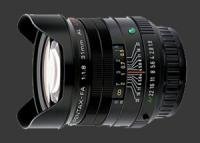
Pentax FA 31mm F1.8 Limited always has a focal-length of 31mm, a 16 to 50mm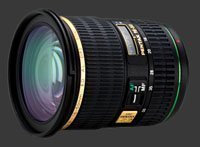
Pentax DA* 16-50mm F2.8 ED AL (IF) SDM can be set to any focal-length between 16 and 50mm.
TIP Enable the ![]() Zoom Lens or
Zoom Lens or ![]() Fixed focal-length. No zoom. icon when searching for lenses by features to look for zoom or prime lenses.
Fixed focal-length. No zoom. icon when searching for lenses by features to look for zoom or prime lenses.
Focal-length determines the angle-of-view seen through a lens for a given sensor-size. With a full-frame sensor a lens gives the same angle-of-view as it would on a 35mm film camera. With a smaller sensor, the angle-of-view becomes smaller. The crop-factor, also called FLMFocal-Length Multipler, is the ratio representing the difference in equivalent focal-lengths. So a 150mm on a full-frame DSLR such as the Nikon D700
Nikon D700 gives the same angle-of-view as a 100mm on a D7000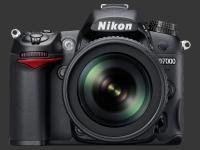
Nikon D7000 since its FLM is 1.5X.
Short focal-lengths show a greater angle-of-view compared to longer ones. Lens focal-lengths fall into broad categories according to the angle-of-view they give depending on the camera's sensor size. There are no official numbers, the table below shows the ranges used here and typical uses.
| Full-Frame | APS-C | Four-Thirds | ||
|---|---|---|---|---|
| Ultra-Wide | Up to 25mm | Up to 16mm | Up to 12mm | Architecture & Interiors |
| Wide | 26 - 34mm | 17 - 23mm | 13 - 17mm | Landscape & Indoors |
| Standard | 35 - 69mm | 24 - 47mm | 18 - 34mm | Travel & Casual |
| Telephoto | 70mm + | 48mm + | 35mm + | People & Sports |
| Super-Telephoto | 250mm + | 160mm + | 125mm + | Wildlife |
The wider the focal-length, the closer you can frame a specific subject. The wider angle-of-view lets you frame a larger subject from a set distance. The longer the focal-length, the further you need to be to frame something of a specific size. The narrower angle-of-view therefore lets you frame a smaller subject from a set distance. The row of images below shows the same subject shot from the same camera position but with different focal-length to illustrate how it affects the angle-of-view.
 |
 |
 |
 |
 |
 |
| 28mm | 62mm | 126mm | 256mm | 465mm | 840mm |
|---|
Aperture
An aperture is the opening inside a lens that lets light passes through. Most times, the term aperture refers to the size of that opening. A wide aperture is also known as a bright aperture because it lets a lot of light in. They are also often called fast apertures because more light allows for faster shutter-speeds. Bright apertures are used to produce a shallow depth-of-field which causes background-blur.
TIP Large apertures are indicated by small numbers, so F/2 is wider than F/8. The easiest is to remember that small numbers imply small depth-of-field and vice-versa.
Lenses are marked with the widest aperture they can be set to. Prime lenses only have one such aperture. In almost all cases, a lens can be set to a much smaller aperture to obtain extensive depth-of-field. Zoom lenses have either one or two maximum apertures. When there is only one, the lens is known as a constant-aperture zoom. This means that it can reach its maximum aperture regardless of focal-length. When there are two, the smaller number is the largest aperture at the wide-end of the zoom, while the larger is the largest aperture at the long-end of the zoom. Below is a table explains the aperture range of some fictitious lenses.
| Lens Specification | Widest Aperture | Typical Minimum Aperture |
|---|---|---|
| 50mm F/1.4 | F/1.4 at the only focal-length | F/16 |
| 14-35mm F/2 | F/2 across the zoom range | F/22 |
| 16-35mm F/2.8-4 | F/2.8 at 16mm & F/4 at 35mm | F/32 |
| 70-300mm F4.5-6.3 | F/4.5 at 70mm & F/6.3 at 300mm | F/22 at 70mm & F/27 at 300mm |
Notice that lenses do not specify the smallest aperture on their markings. This is rarely important because once a too small aperture is reached, the entire image becomes softer. The point at which this happens depends on pixel size and is called the diffraction limit. For the typical cropped-sensor DSLR, this is between F/11 and F/16.
TRIVIA Aperture is measured as a fraction of focal-length, shown as F/no. So, for a 100mm lens, an aperture of F/4 is 25mm across. This is also why wider apertures have smaller F/no.
Mount
 A mount is the connection between a camera and a lens. For a camera and lens to attach they have to have the same lens mount. Most camera manufacturers have their own lens mounts. This goes for Canon, Nikon, Pentax, Samsung, Sigma and Sony. Sony actually has two, the Alpha for SLR
A mount is the connection between a camera and a lens. For a camera and lens to attach they have to have the same lens mount. Most camera manufacturers have their own lens mounts. This goes for Canon, Nikon, Pentax, Samsung, Sigma and Sony. Sony actually has two, the Alpha for SLR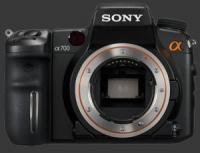
Sony Alpha A700 and SLT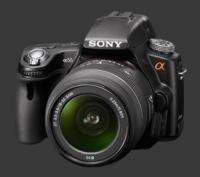
Sony Alpha SLT-A55 cameras and the E for NEX
Sony Alpha NEX-5 cameras. The Four-Thirds mounts is used for Olympus and Panasonic DSLRs and the smaller Micro Four-Thirds mount for their Mirrorless ILC (SLD)
Olympus PEN E-P1 cameras. Fuji uses the Nikon mount. Third-party manufacturers make their lenses available in various mounts, these include Sigma, Tokina and Tamron.
Even when a camera and lens share a mount, it is possible that the lens is not suitable for the camera due to its sensor size. Some lenses are made for cropped-sensorsAlmost exclusively for APS-C sensors (1.5X or 1.6X FLM) only which allows them to be smaller, lighter and cheaper. These lenses will show missing cornersUnless a a special crop mode is used, resuting in a loss of more than 60% of megapixels. when mounted on a Full-Frame or APS-H camera. Full-frame lenses can be used with any sensor-size. Buying full-frame lenses therefore lets you upgrade to a larger sensor without having to buy new lenses, unless the effective angle-of-view of your lenses is no longer suitable.
Mounts come in a few variants. These variants dictate supported lens features. Some lenses for instance have an internal focus motor while others are driven by a motor inside the camera. Mount variants can support both or only one type of motor. Compatible lenses will attach even if the type of motor is not supported but will not be able to autofocus. Detailed compatibility information is provided by manufacturers.
Choosing a brand of camera dictates the lens mount. This gives access to a different collection of potential lenses. This is one of the top factors in choosing a DSLR because certain types of lenses do not exist from all manufacturers. Canon and Nikon are presently the only major manufacturers to produce tilt-shift lenses. Ultra-slim lenses for DSLRs, known as pancakes, are almost exclusively made by Pentax.
Stabilization
Stabilization which reduces the effects of camera shake, allowing the use of lower shutter-speeds can be built into lenses or camera bodies The choice is almost exclusively dictated by the camera brand. Canon, Nikon and Panasonic only offer lens-based stabilization, while Pentax, OlympusCertain discontinued models from Pentax and Olympus did not offer any form of stabilization. and Samsung only offer body-based stabilization. Sony offers body-based stabilization for Alpha cameras and only lens-based stabilization for its NEX lineup at this time.
Body-based, often called built-in, stabilization is known as SR for Pentax, IS for Olympus and SSS for Sony. This has the advantage to apply to all lenses, including fast primes, macro lenses, fisheye lenses and legacy ones. There is also a cost advantage because stabilization is paid for only once.
Lens-based stabilization is known as IS from Canon, VR from Nikon, OS from Sigma and VC from Tamron. Each of these brand sells both stabilized and non-stabilized lenses but not all lenses exist in a stabilized form. Very few prime lenses offer stabilization for example. There can also be a large price difference between a lens and its stabilized equivalent. The claimed advantage is that lens-stabilization can be made more optimally but this claim remains to be proven.
TIP Find stabilized cameras using the ![]() Stabilization: Compensates for tiny involuntary movements of the camera. icon and find stabilized lenses using the
Stabilization: Compensates for tiny involuntary movements of the camera. icon and find stabilized lenses using the ![]() Image Stabilized Lens icon.
Image Stabilized Lens icon.
Third party lens manufacturers offer lenses with and without stabilization. When a stabilized lens is used on a camera with built-in stabilization, only one stabilization mechanism can be used at a time. It must be manually disabled in the camera or on the lens.
Focus & Macro
All lenses can focus from a certain distance onwards, most of them to infinity. The closest a lens can focus is called the minimal focus distance. For zoom lenses, this may vary across the zoom range but the closest is usually near the wide-end. The focal-length and minimum focus distance together determine the maximum magnification of a lens. This is the absolute measure of the size of subjects which can be captured. A lens with a magnification of 1:1 is known as a macro lens.
TIP Enable the ![]() Macro capable with reproduction ratio of 1:1 or greater. icon when searching for lenses by features to look for macro lenses.
Macro capable with reproduction ratio of 1:1 or greater. icon when searching for lenses by features to look for macro lenses.
Focusing can be done via a normal motor or a super-sonic motor. Super-sonic motors are more quiet and are said to focus faster. Each brand has their own acronym for these motors: USM for Canon, SWM for Nikon, SDM for Pentax, SWD for Olympus, SSM for Sony and HSM for Sigma.
Weatherproof
Certain cameras are weatherproof which means they are have seals to protect them against the dust, moisture, rain or snow. Certain lenses are weatherproof too. For the weatherproofing to work, both the camera and lenses have to be weatherproof. As one would expect, weatherproof lenses are more expensive than regular ones.
TIP Enable the ![]() Weatherproof - Seals protect from dust, humidity and light splashing. icon when searching for lenses by features to look for weatherproof lenses.
Weatherproof - Seals protect from dust, humidity and light splashing. icon when searching for lenses by features to look for weatherproof lenses.
Please Support Neocamera
All information on Neocamera is provided free of charge yet running this website is a huge endeavor. Purchases made via affiliate links found throughout the site help keep it running and up-to-date. There is no additional cost to you, so please consider buying via these links to our affilates:
Thank you for your support!
New Cameras & Lenses

Sony FE 28-70mm F/3.5-5.6 OSS II
Stabilization & Weatherproof
Sony E Mount Zoom
2025-12-02
Sony Alpha A7 V
33 Megapixels Mirrorless
Sony E Lens Mount
Built-in Stabilization
Weatherproof
2025-12-02
Venus Optics Laowa 35mm F/2.8 Zero-D Tilt-Shift 0.5X Macro
Leica L Mount Prime Lens
2025-11-29
Venus Optics Laowa 35mm F/2.8 Zero-D Tilt-Shift 0.5X Macro
Hasselblad XCD Mount Prime Lens
2025-11-29
Venus Optics Laowa 35mm F/2.8 Zero-D Tilt-Shift 0.5X Macro
Fujifilm G Mount Prime Lens
2025-11-29
Venus Optics Laowa 35mm F/2.8 Zero-D Tilt-Shift 0.5X Macro
Sony E Mount Prime Lens
2025-11-29
Updates
2025.11.13

Best Gifts for Photographers in 2025 by Budget
The annual Neocamera Photography Gift Guide updated to 2025. Find great gifts for photographers with any price budget.
2025.07.07

Stellar Photo Recovery Review
Review of Stellar Photo Recovery V12. This Windows and MacOS software can recover photos and videos in a huge number of formats from memory cards, USB drives, SSDs and HHDs.
2025.05.14

Huion Kamvas 13 Gen 3 Review
In-Depth review of the Huion Kamvas 13 Gen 3 Pen Display Tablet for photographers and graphic artists.
2025.01.18

Fujifilm GFX 2025 Lens Roundup
Lens Review roundup of Fujifilm GFX Medium-Format lenses. Quality, performance and handling of the GF20-35mm F/4R WR, GF30mm F/3.5 Tilt-Shift and the GF55mm F/1.7.
2024.11.18

Best 2024 Photography Gifts for Every Budget
Great gifts for photographers and photo enthusiasts selected for every budget among the best products of 2024.
2024.08.07

Eye Protection Tips for Professional Photographers
The four main considerations for professional photographers regarding eyewear.
2024.07.14

Fujifilm X100VI Review
Flagship fixed-lens compact digital camera with a 40 MP sensor and Image-Stabilization, a first for the series. Retro design featuring dual control-dials, plus direct ISO, Shutter-Speed and EC dials. Its hybrid viewfinder can switch between EVF and OVF mode.
2024.05.09

Fujifilm GFX100 II Review
Flagship 102 Megapixels Medium-Format Mirrorless Digital Camera with 8-Stop 5-Axis IBIS, 8 FPS Drive, 8K Video and 400 MP Super-Resolution capture in a weatherproof and freezeproof body with dual control-dials and dual memory-card slots.
2024.04.03

Fujifilm X-T5 Review
Newest Fujifilm flagship boasting a 40 MP APS-C sensor, 5-axis IBIS with 7-stop efficiency, 15 FPS continuous drive, 6.2K Video capture, dual control-dials and dual SDXC UHS-II slots in a sturdy weatherproof and freezeproof body.
2023.11.20

Best Digital Cameras of 2023
Find out which are the Best Digital Cameras of 2023. All the new Mirrorless Digital Cameras from entry-level to high-end professional.
2023.07.10

Fujifilm X-H2 Review
40 Megapixels APS-C Hybrid Mirrorless Digital Camera with 7-stop IBIS. Fastest shutter ever and 8K video capture. Large builtin EVF with 0.8X magnification and 5.8 MP, plus an Eye-Start Sensor. Packed with features and large number of controls in a weatherproof and freezeproof body.
2023.05.07

Sony FE 20-70mm F/4G Review
Review of the unique Sony FE 20-70mm F/4G lens. The optical zoom of this lens spans ultra-wide-angle and medium focal-length coverage, making it one of the most versatile Full-Frame lenses on the market.






